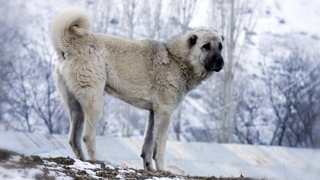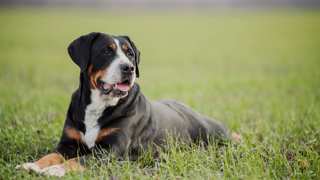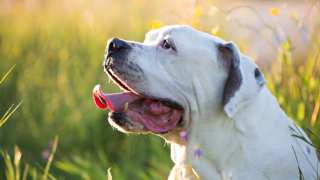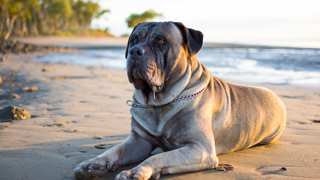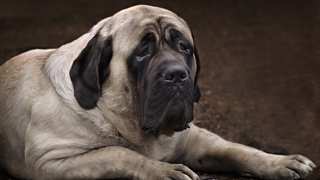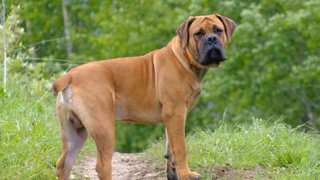The Rottweiler diet plan will need to include animal proteins and carbohydrates, vitamins and minerals, and omega fatty acids--nutrients every dog needs to maintain its health. This means the best "Butcher's Dog" food is premium dry kibble, as it has balanced portions of the above-listed ingredients. One high-quality brand, Royal Canin, even has a line of "breed-specific" food formulated expressly for the Rottweiler dog diet. Royal Canin Rottweiler Adult, Royal Canin Rottweiler Junior, and Royal Canin Rottweiler Puppy food are all designed to meet the breed's nutritional needs at each life stage.
But specifically how much to feed a Rottweiler? In short, quite a lot! Adult Rottweiler dog food portions average 5-6 cups a day, divided into two meals. Portions of food for Rottweiler puppy dogs are a bit smaller: depending on age, an average of 3½ cups per day, divided into three meals (not two) until nine months old.
(A NOTE ABOUT BLOAT: This breed is prone to gastric torsion, aka bloat, that occurs when a dog's stomach fills with air when it "wolfs" its food. The condition is often fatal. Owners are strongly advised not to feed their Rotties for an hour before or after exercising, and these dogs should eat two smaller meals per day instead of just one big one.)
For more info on how much to feed Rottweiler puppy and adult dogs, here's a handy Rottweiler food chart:
Dog AgeDog WeightFood TypeAmountFrequency2 Months15 lbsDry (Puppy formula)0.5 cups3x/day3 Months25 lbsDry0.75 cups3x/day6 Months50 lbsDry1.25 cups3x/day9-10 Months75 lbsDry* (Puppy/Adult)2 cups2x/day12 Months95 lbsDry (Adult formula)2.25 cups2x/day14 Months+110 lbsDry2.5 cups2x/day*--Around this time, transition to adult food by mixing in adult formula with the puppy formula, in increasing amounts, for one week.
It's vital that owners don't overfeed their Rottweilers. These dogs are highly prone to obesity, so a Rottie that's constantly overfed (and under-exercised) will quickly become overweight--and a fat Rottweiler will have numerous health problems and a shorter lifespan. You can help control your Rottie's weight by having consistent feeding and exercise schedules, and by not leaving food in the dog's bowl all the time.
If you're worried your Rottweiler is overweight, try this test: run a hand along the dog's side, and if you can't feel any ribs beneath the muscle, it's diet time--which means less food and more exercise!

